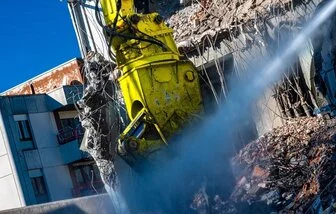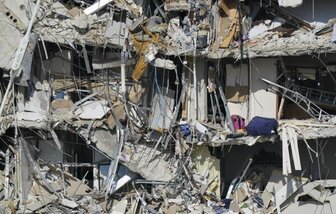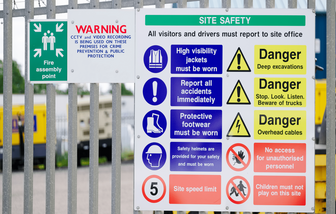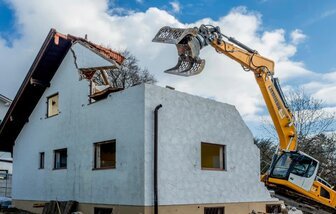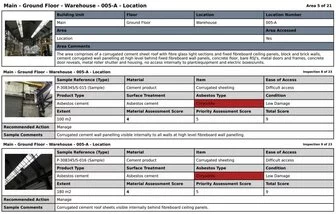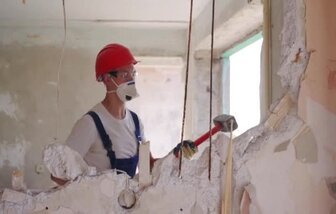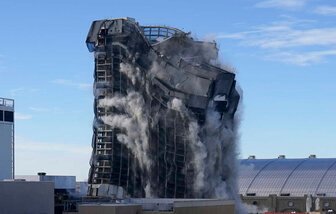How to deal with asbestos in demolition
Asbestos in demolition risks, hazards and management
One of the key issues arising in demolition these days is asbestos. Widely used in construction projects by previous generations, asbestos is now accepted as the UK’s largest occupational killer and there are strict guidelines for the safe removal and disposal of the asbestos.
Most work with asbestos needs to be carried out by a licensed asbestos removal contractor This includes work on asbestos coating and asbestos lagging; and work on asbestos insulation board (AIB) where the demolition risk assessments demonstrates that the fibre release will be high, e.g . the material is significantly damaged, or the work is not short duration work.
” Short duration” means any one person doing this type of work for a total of less thank two hours, in any seven consecutive days. The total time spent by all workers must not exceed two hours. This includes time spent setting up, clearing and cleaning up. Non-licensed work includes includes work on asbestos-containing textured coatings and asbestos cement.
From the 6 April 2012, some non-licensed work needs to be notified to the applicable enforcing authority. Brief written records should be kept of non-licensed works, which has to be notified, e.g. copy of the notification with a list of workers on the job, plus the level of likely exposure of those workers to asbestos.
This does not require air monitoring on every asbestos removal demolition project, if an estimate of degree of exposure can be made based on experience of similar past tasks or published guidance.
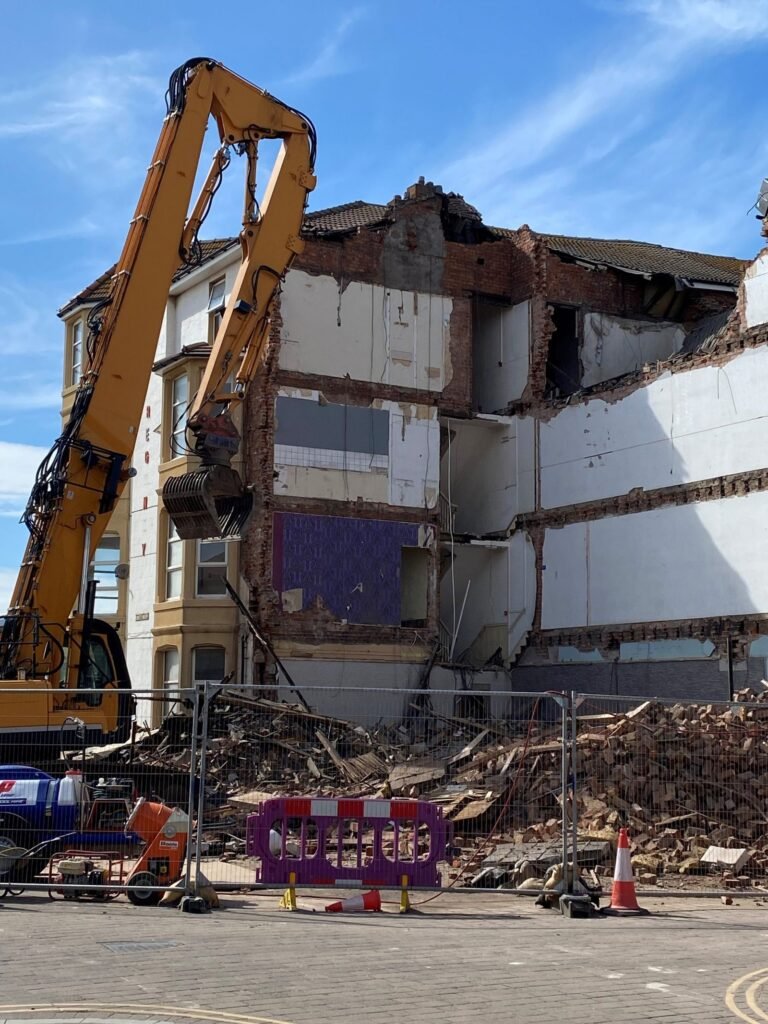
Control of Asbestos Regulations (CAR) 2012
By April 2015, all workers/ self-employed doing notifiable non-licensed work with asbestos must be under health surveillance by a Doctor. Workers who are already under health surveillance for licensed work need not have another medical examination for non-licensed work. BUT medicals for notifiable non-licensed work are not acceptable for those doing licensed work. There has been some modernisation of language and changes to reflect other legislation, e.g. the prohibition section has been removed as the prohibition of supply and use of asbestos is now covered by REACH.
Asbestos Regulations also include the duty to manage asbestos in non-domestic premises. The regulations require mandatory training for everyone liable to be exposed to asbestos fibres at work. These include maintenance workers and others who may come into contact with or who may disturb asbestos as well as those involved in asbestos removal work.
When work with asbestos or which may may disturb asbestos is being carried out, the CAR 2012 requires employers and self-employed to prevent exposure to asbestos fibres. Where this is not reasonably practicable, they must make sure that exposure is kept as low as reasonably practicable, they must make sure that exposure is kept as low as reasonably practicable by measures other than the use of respiratory protective equipment (RPE). The spread of asbestos must be prevented. The Regulations specify the work methods and controls that should be used to prevent exposure and spread.
The importance of Respiratory Protective Equipment
Respiratory Protective Equipment is an important part of the regime but it must not be the sole measure used to reduce exposure and should only be used to supplement other measures. Work measures that control the release of fibres such as those detailed in the demolition systems for non-licensed work should be used. RPE must be suitable, must fir properly and must ensure that worker exposure is reduced as low as is reasonably practicable. Most asbestos removal work must be undertaken by a licensed contractor but any decision on whether particular work is licensable is based on the risk. Work is only exempt from licensing if:
- The exposure of employees to asbestos fibre is sporadic and low intensity (but exposure cannot be considered to be sporadic and of low intensity.
- It is clear from the risk assessment that the exposure of any employee to asbestos will not exceed the control limit; and the work involves , short non-continuous maintenance activities if any one person carries out work with these materials for less than 1 hour in a 7-day period. The total time spent by all workers on the work should not exceed a total of 2 hours.
- Removal of materials in which the asbestos fibres are firmly linked in a matrix. Such materials include: asbestos cement; textured decorative coating and paints which contain asbestos; articles of bitumen, plastic, resin or ribber which contain asbestos where their thermal or acoustic properties are incidental to their main purpose(e.g. vinyl floor tiles, electric cables, roofing felt); and other insulation products which may be used at high temperatures but have no insulation purpose (e.g. gaskets, washers, ropes and seals).
- Encapsulation or sealing of ACMs which are in good condition; or air monitoring and control, and the collection and analysis of samples to find out if a specific material contains asbestos.
Under the CAR 2012, anyone carrying out work on asbestos insulation, asbestos coating or asbestos insulating board (AIB) needs a licence issues by the HSE unless they meet one of the exemptions above.
Although work may not need a licence to carry out a particular job, there is still a need to comply with the rest of the requirements of the CAR 2012. If the work is licensable there are a number of additional duties. Duty-holders need to:
- Notify the enforcing authority responsible for the site where they are working ( for example the HSE or the local authority)
- Designate the work area
- Prepare specific asbestos emergency procedures and pay for their employees to undergo medical surveillance.
What is demolition?
The process involves Rotational hydraulic shears and rock-beakers attached to specialist excavators are also used to cut or break through wood, cut steel and crush concrete which reduces the structure to a rubble
What is a premature collapse?
TPremature collapse of these structures is one of the main causes of serious injuries resulting from demolition activities. The most common type of incidents is the lack of planning before commencement
Demolition hazards
If a demolition project is well planned the risks of injury and death can be minimised. It should be emphasised that the planning and execution of a demolition project should only be done by appropriately competent persons.
What is a section 80 demolition notice?
If your considering demolishing an existing building you will need to submit a demolition, Section 80 Notice together with your (RAMS) to your local authority according to section 80
What is a pre-demolition survey
When a building is to be demolished the (non-domestic) client (usually the property owner) has a duty to provide pre-demolition information to the designer and contractor. This will involve a pre-demolition investigation and survey.
How to manage asbestos in demolition
One of the key issues arising in demolition these days is asbestos. Widely used in construction projects by previous generations, asbestos is now accepted as the UK’s largest occupational killer and there are strict guidelines for the safe removal
How to manage a demolition site
Where any redundant building, structure plant has contaminated flammable materials, precautions must be observed to avoid fires and explosions. Specialist advice must be required to identify any residual
What is manual demolition?
Among the methods, manual demolition is found to be most applicable for most sites, especially for areas located in the urban zone. The safety of the demolition process would greatly depend on the type of procedure used.
What is non explosive demolition?
You do not need explosives for every demolition job. Most people assume that for a demolition to be a demolition there is a need for a kaboom. It does not have to be that way
Structural demolition
Structural demolition is not a walk in the park. Total Group is well placed to deliver a safe, environmentally friendly and a budget wise project. We focus on a process that will assist you to salvage and recycle material for reuse.
What is high risk demolition?
The building contractor needs to make a thorough risk assessment to look for both risks and hazards. Control measures are then implemented to prevent any accident that could be fatal.
Controlled demolition methods
If you have a large building that requires demolishing, you cannot rely solely on manual demolition to get the project completed. There is only so much that a team of demolition contractors.
Ready to start your project ?
Let's Work Together
Please complete the form below and someone from the Total team will be in touch.

